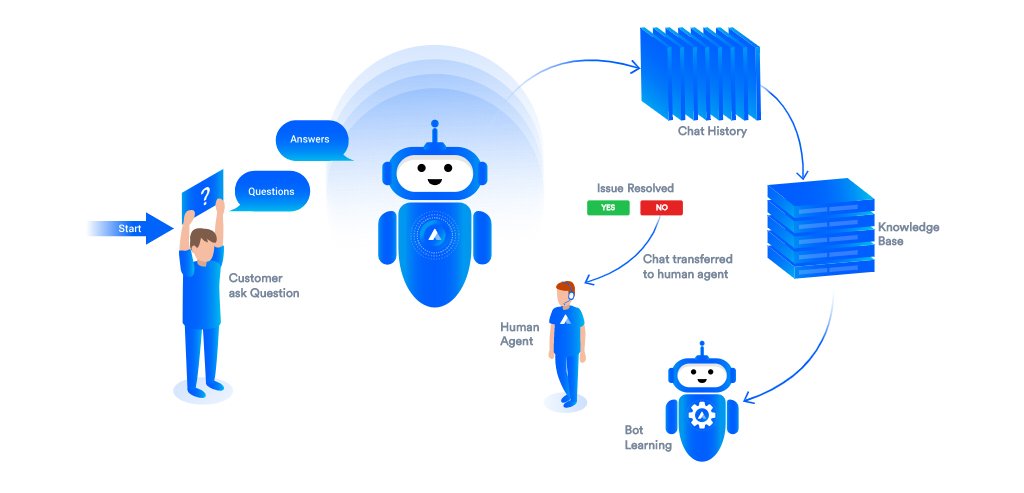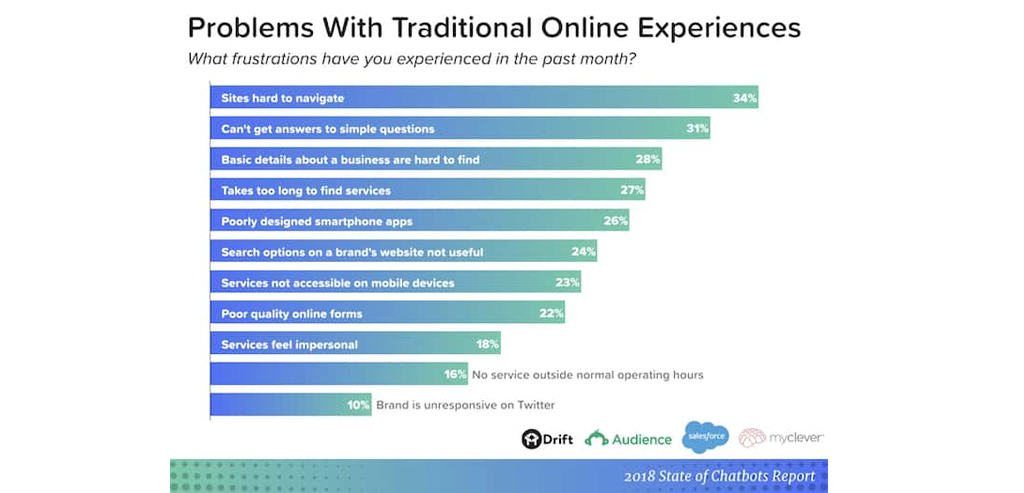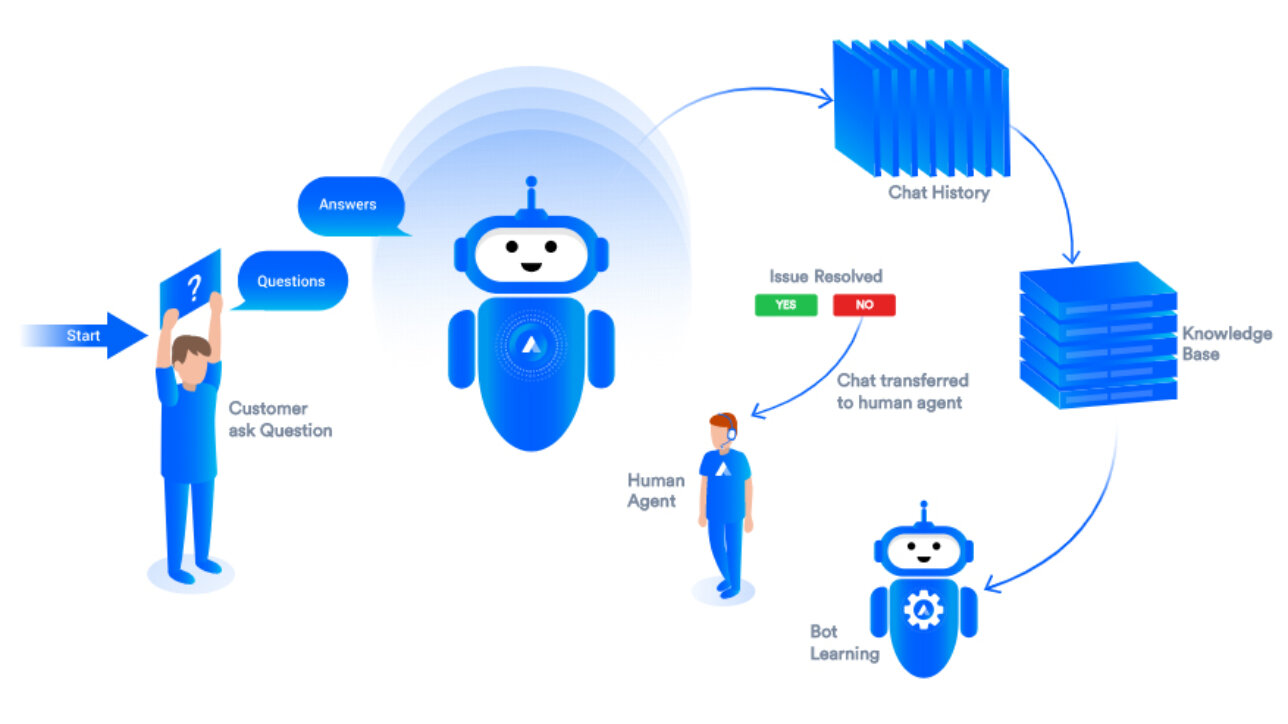“How may I help you?” – I’m sure almost all of us have seen a chatbot pop-up and even communicated with it while surfing through a website.
It is predicted that by 2020, 80% of the enterprises will use chatbots.
You ask, why do we need chatbots when consumers can call for queries?
Well, the answer to your question is that 56% of people would rather message than call customer service. It is also feasible for a brand, as it takes on the burden of time-consuming tasks and allow you to better serve your customers in ways that most matter. Juniper Research also forecasts that this technology will save businesses about $8 billion annually by 2022.
Are you ready to be a part of the 80% of the population that uses chatbots and save $8 billion?
What are Chatbots?
Chatbots are computer programs built to automatically engage with received messages. Chatbots are programmed to respond in a similar manner each time, and respond differently to messages containing certain keywords. It also uses machine learning to adapt their responses to fit the situation.

Source: https://acquire.io/blog/chatbots-trends/
The main goal of chatbots is to assist customers to gain their end goal as quickly as possible, whether it is enlightening with more information or making a sale.
Chatbots are used for multiple reasons:

Source : https://www.drift.com/blog/chatbots-report/
Interestingly, chatbots are no longer just virtual assistants. They help marketers to win customer loyalty. Data from chatbots are analyzed to understand customer preferences and profiles, and services or products can be personalized accordingly.
Reliance Jio Digital Services acquired an 87% stake in AI chatbot company Haptik for ₹700 crore earlier this year. Haptik consists of 50+ brands, designs chatbots as per specific needs of businesses. Their products consist of support bots, lead bots, concierge bots and feedback bots.
Most common types of chatbots
There are several different types of chatbots available. It’s important to understand the different options, so you can implement a chatbot that works best for your business.
- Scripted Chatbot
A scripted chatbot uses a predetermined list of questions to respond to customer queries. Scripted bots are rules-based and programmed to perform specific actions or provide information based on the user’s response.Scripted bots can also present users with a list of options from a pre-populated questionnaire.
e.g.- Ometrics
2. AI Chatbots
AI chatbots use natural language processing (NLP) to detect user queries and provide an intelligent response. This is the same technology used by voice recognition systems such as Siri and Cortana.
e.g.- Oheyo
3. Customer Service Chatbot
Customer service chatbots obtain information from a user and then take an action based on the information provided. For instance, a service chatbot might book a flight or hotel room, take a food order, or purchase tickets to an event. These types of chatbots are currently the most widely used in the customer service industry.
e.g.- GoHeroAI

Source: gohero.ai
4. Voice-enabled and contextual chatbots
These are the most advanced types of chatbots and include AI tools such as Alexa, Siri, Cortana, and Google Now.
Benefits of Chatbots
- Save Time and Money
As you automate conversations that would otherwise require an employee to answer, organizations save time and money that can then be allocated to other efforts. The amount of time you save increases as your inbound message quantity increases.
2. Generate Leads and Revenues
Chatbots use direct messages to gather information necessary to provide effective support. For instance, they ask users the reason they’re visiting your page (the most common question in many of the engagements)
Automation of this initial interaction allows users to share the information needed for the agent to better serve them without a human assigned to ask for it.
The chatbot automatically delivers qualified leads to the sales organization. Another advantage is that no employee will have the monotonous job of repeating the same answers over and over again. You’ll find the team is happier with more quality leads and time to spend on more meaningful work.
3. Provide ‘After Hours’ Support
The main use of chatbots is to provide quick answers in an emergency. However, organizations that don’t offer 24-hour support won’t provide answers when the office is closed.
With the use of this robust chatbot customers can gain access to the information they need, even when your business is closed.
This is especially important as consumers expect a quicker response than brands can guarantee.
Content Strategy for Chatbot Interaction
It is very essential to strategize the content you’d like customers to engage with throughout the chatbot interaction.
You can start with FAQs. Think about the questions that customers are likely to ask more frequently. That way, you build out your flow to guide your customers in the best way possible.
You can also take the help of the Marketing Team, Sales Team and the Customer Service to knock down other questions that you can add in your chatbot.
Give Voice to your Chatbot
To give a human touch to your chatbot, you can add voice to your Chatbot. You also give a name to your brand’s chatbot, so the consumers know that they’re talking to a chatbot. This gives them the opportunity to be transparent with customers and foster a friendly tone.
Make sure to invite copywriting teams into the process to set clear guidelines and a consistent voice for your chatbot.
Create a Great ‘Welcome’ Message
The welcome message is incredibly important to engage users and get them to respond to your bot. these messages should be compelling, set expectations and ask questions!
Be Compelling
Just because it is automated doesn’t mean it has to sound robotic. Remember about giving a human touch? The chatbots can be fun, just make sure you maintain your ‘brand voice’.
Set Expectations
First, let customers know they’re chatting with a bot so they understand the potential conversation limits.
Second, let customers know how and when they will chat with a real person.
Ask Questions
Once you’ve engaged your audience, ask them questions that will keep the conversation going. Use the important questions you found in the FAQ section.
Chatbots in relation to Content Marketing:
A chatbot is an excellent tool to directly reach customers and supply them with content based on their preferences. Hence, chatbot marketing is often employed to make communication with customers more relevant.
There are several ways in which chatbots enhance content marketing strategies for businesses:
- A chatbot provides an easy and effective way to connect with a business, that eliminates the need to install an app.
- Provide customers and leads with relevant content. A business can send personalized content via a chatbot, that maximizes the chance that the people will read it.
- Ask for content ideas from customers. A business can provide a chatbot with some questions regarding product preferences, blog ideas, product suggestions, tips, frequent problems that users encounter when they use a specific product or service, and so on.
Conclusion:
Chatbots have multiple uses beyond customer service. Marketers can make use of the chatbots into their marketing strategy at a number of different points along the customer journey, like- respond to customer questions and make purchasing suggestions using data gathered about the customer. They can sell, entertain, educate and assist by generating everything from memes to sports statistics, and they can order anything from pizza to electronics.

